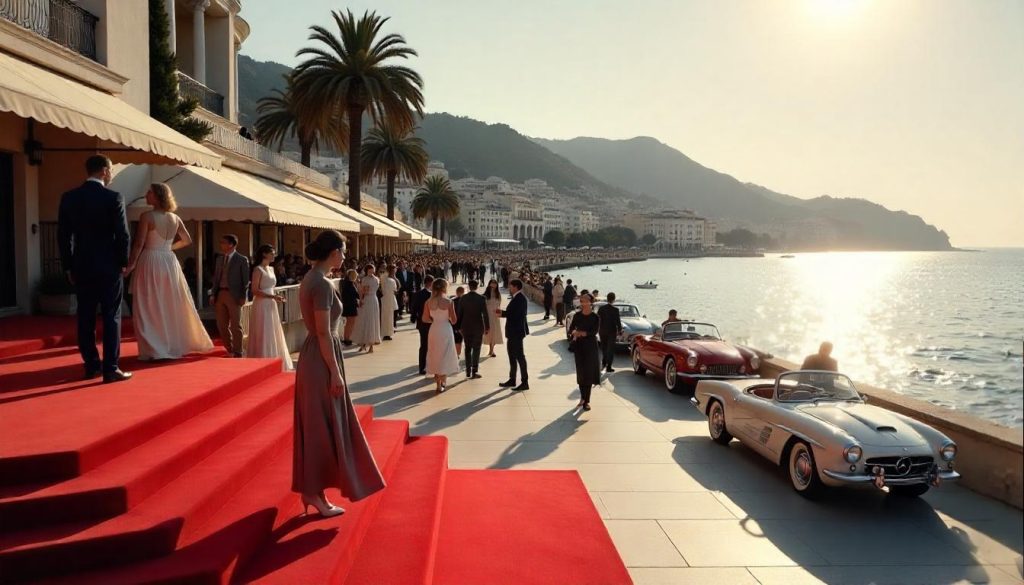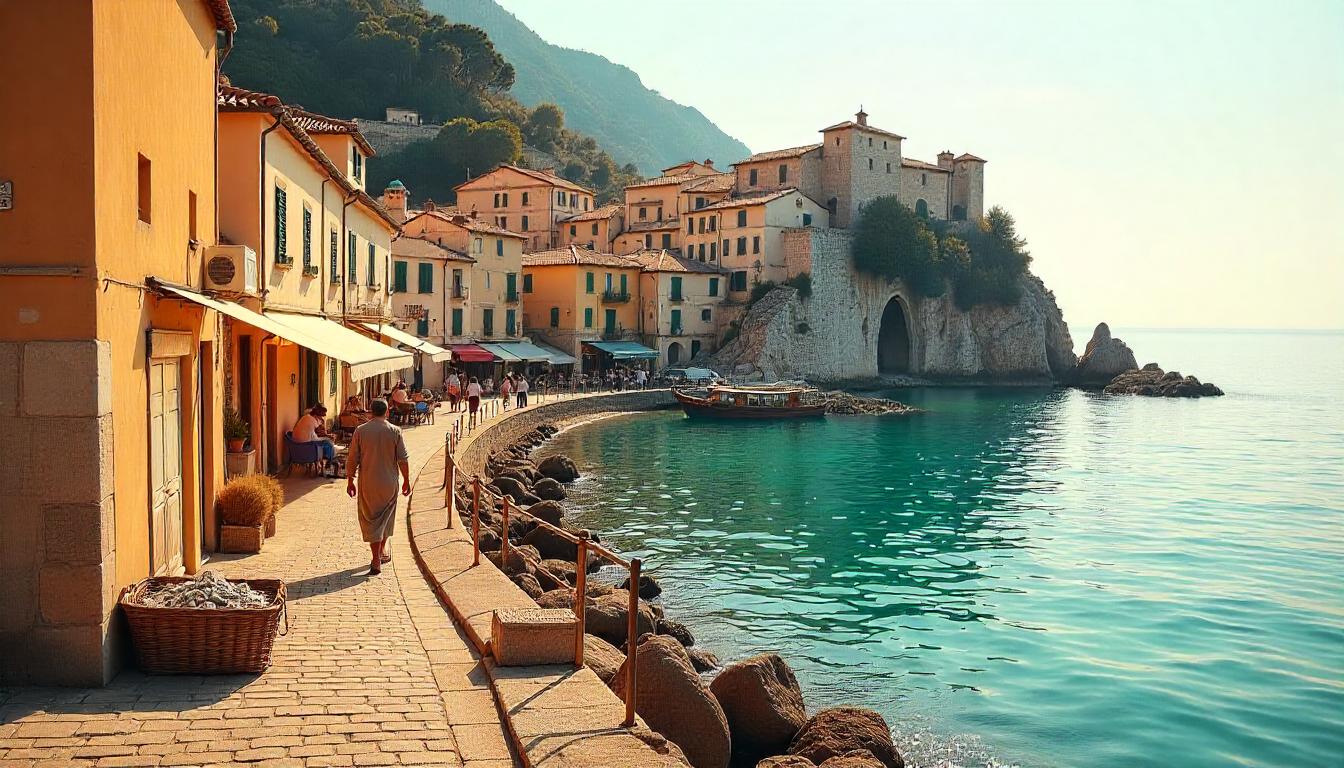The Côte d’Azur, often referred to as the French Riviera, has a fascinating past, and the history of the Côte d’Azur reveals a remarkable transformation from humble fishing villages to a global symbol of luxury resorts. This stretch of Mediterranean coastline, spanning from Menton to Cannes, has evolved over centuries, shaped by trade, tourism, and cultural influences. In this article, we’ll trace its journey through time, exploring key periods, influential figures, and the factors that turned this region into a playground for the elite while preserving its historical charm.
Early Beginnings in the History of the Côte d’Azur
The history of the Côte d’Azur begins with its earliest inhabitants, the Ligurians, who settled the region around 1000 BCE. These early communities relied on fishing and agriculture, establishing small villages along the coast. For instance, Nice, originally called Nikaia by the Greeks in the 4th century BCE, was founded as a trading post due to its natural harbor. Additionally, the Romans later occupied the area, leaving behind ruins like the Arènes de Cimiez in Nice, a 1st-century amphitheater that still stands today.
Roman Influence on the Riviera
The Romans brought infrastructure and culture to the region. For example, they built roads, aqueducts, and villas, some of which can be seen in Fréjus, where the Roman aqueduct remains a historical landmark. Moreover, their presence introduced viticulture, laying the foundation for the region’s wine production, which continues with varieties like Côtes de Provence rosé. Transitioning to legacy, the Roman era marked the first significant development in the Côte d’Azur’s history, setting the stage for future growth.
Medieval Period: Fishing Villages in the History of the Côte d’Azur
During the medieval period, the history of the Côte d’Azur was defined by its fishing villages and fortified towns. Villages like Villefranche-sur-Mer and Antibes thrived on fishing and small-scale trade, with communities centered around the sea. For instance, Antibes, then called Antipolis, was a key port, while Èze, perched on a hill, offered protection from pirates. Also, the region came under the control of the House of Savoy in the 14th century, which influenced its political and cultural development.
Fortifications and Trade
Fortifications were crucial during this time. For example, the Citadelle in Villefranche-sur-Mer, built in the 16th century, protected the harbor from invaders. Additionally, trade with nearby Genoa brought Italian influences, seen in the region’s architecture and cuisine, like the onion tart pissaladière. Transitioning to daily life, most residents lived modestly, relying on the sea for their livelihood. Thus, the medieval period shaped the Côte d’Azur as a region of resilient coastal communities.
The 18th Century: The Birth of Tourism in the History of the Côte d’Azur
The 18th century marked a turning point in the history of the Côte d’Azur, as the region began to attract European aristocrats seeking its mild climate. British travelers, in particular, discovered Nice as a winter retreat, drawn by its sunny weather—averaging 15°C in January—compared to England’s cold winters. For instance, the Promenade des Anglais in Nice was named after these English visitors, who funded its construction in 1820 to provide a scenic walkway along the sea.
Aristocratic Influence on the Riviera
Aristocrats brought wealth and culture to the region. For example, they built grand villas, like the Villa Kérylos in Beaulieu-sur-Mer, inspired by ancient Greek architecture. Also, the influx of visitors led to the development of hotels and cafes, catering to the growing number of tourists. Transitioning to impact, this period laid the groundwork for the Côte d’Azur’s reputation as a luxury destination. Therefore, the 18th century was a pivotal moment in its transformation.
The 19th Century: Railroads and Resorts in the History of the Côte d’Azur
The 19th century accelerated the Côte d’Azur’s evolution, thanks to the arrival of the railroad in 1864, which connected Nice to Paris. This made travel easier, bringing more visitors, including artists like Matisse and Picasso, who were inspired by the region’s light and landscapes. For instance, Matisse settled in Nice in 1917, later creating works like Nu Bleu IV, now displayed at the Musée Matisse. Additionally, towns like Cannes and Monte Carlo began to develop as luxury resorts.
The Rise of Monte Carlo
Monte Carlo, in Monaco, became a symbol of opulence in the late 19th century. For example, the Casino de Monte-Carlo, opened in 1863, attracted wealthy gamblers, funding the principality’s growth. Also, the Belle Époque architecture of hotels like the Hôtel de Paris Monte-Carlo, built in 1864, showcased the era’s extravagance. Transitioning to culture, this period also saw the first Monaco Grand Prix in 1929, adding to the region’s allure. Thus, the 19th century solidified the Côte d’Azur’s status as a luxury destination.
The 20th Century: Hollywood and High Society in the History of the Côte d’Azur
The 20th century brought global fame to the Côte d’Azur, as Hollywood stars and high society flocked to its shores. The Cannes Film Festival, launched in 1946, turned Cannes into a cinematic hub, with stars like Grace Kelly walking the red carpet. For instance, Grace Kelly’s marriage to Prince Rainier III of Monaco in 1956 further elevated the region’s glamorous image. Additionally, Saint-Tropez became a hotspot after Brigitte Bardot filmed And God Created Woman there in 1956.
The Jet Set Era
The jet set era defined this period. For example, celebrities like Elizabeth Taylor and Frank Sinatra were often spotted in Monte Carlo, dining at Le Louis XV or partying at the Amber Lounge. Also, the region’s beaches, like Plage de Pampelonne in Saint-Tropez, became synonymous with luxury, with beach clubs catering to the elite. Transitioning to impact, this era cemented the Côte d’Azur’s reputation as a playground for the rich and famous. Therefore, the 20th century marked the peak of its transformation into a luxury resort destination.

Modern Day: Balancing History and Luxury on the Côte d’Azur
Today, the Côte d’Azur balances its historical roots with its modern identity as a luxury destination. Fishing villages like Villefranche-sur-Mer still retain their charm, with pastel-colored buildings and small harbors. For instance, the old town of Antibes, with its ramparts and Marché Provençal, offers a glimpse into its medieval past. At the same time, luxury resorts in Cannes and Monaco cater to high-end travelers, with hotels like the Hôtel Martinez in Cannes charging $1,000 per night.
Preserving the Past
Efforts to preserve history are evident. For example, the Musée Masséna in Nice showcases the region’s past, with exhibits on its 19th-century tourism boom, and entry costs just $5. Also, historical sites like the Roman ruins in Cimiez are free to visit, offering a window into the ancient past. Transitioning to modernity, the region also hosts modern events like the Monaco Grand Prix, blending history with contemporary appeal. Thus, the Côte d’Azur today is a harmonious mix of old and new.
Cultural Influences in the History of the Côte d’Azur
The Côte d’Azur’s history has been shaped by diverse cultural influences. Its proximity to Italy brought Italian flavors, seen in dishes like socca, a chickpea pancake, and pissaladière. For instance, the Italian influence is also evident in the region’s architecture, like the pastel buildings of Menton, often called “Little Italy.” Additionally, the British and Russian aristocrats of the 19th century left their mark, with landmarks like the Promenade des Anglais and the Russian Orthodox Cathedral in Nice.
Artistic Legacy on the Riviera
Artists have played a major role in the region’s cultural history. For example, Picasso worked in Antibes in 1946, leaving behind works at the Picasso Museum in Château Grimaldi. Also, Chagall’s biblical message series at the Musée Marc Chagall in Nice reflects the region’s artistic pull. Transitioning to impact, these influences have made the Côte d’Azur a cultural hub, attracting art lovers today. Therefore, its history is a tapestry of diverse traditions.
Practical Tips for Exploring the History of the Côte d’Azur
Exploring the region’s history doesn’t have to be expensive. First, visit free historical sites like the Roman ruins in Cimiez or the old town of Antibes. Next, use the TER train network to travel between towns—fares are $5 per trip, connecting Nice, Antibes, and Cannes. Also, buy a French Riviera Pass for $30, which includes entry to museums like the Musée Masséna and the Picasso Museum, saving you money.
歴史ツアーのタイミング
The best time to explore is May or September, when the weather is mild, around 22°C, and crowds are smaller. For instance, visiting in May lets you enjoy the Cannes Film Festival’s historical vibe without peak-season prices. Transitioning to planning, book accommodations early, as summer fills up fast. Thus, timing ensures a more relaxed historical journey.
The Cost of Exploring the History of the Côte d’Azur
A 5-day historical tour can be budget-friendly. A mid-range hotel in Nice costs $150 per night, totaling $750 for five nights. Train fares between towns total $25 per person. Museum entries, like the Picasso Museum and Musée Masséna, average $5 each, totaling $25 for five attractions. Meals at local cafes cost $20 per person daily, or $400 for four people. Total: about $1,200 for four, or $300 per person.
予算節約のヒント
Save by using the French Riviera Pass for museum entries. For example, the pass covers the Musée Marc Chagall, saving you $10. Also, eat at markets like Cours Saleya in Nice—a $5 socca is cheaper than a $20 cafe meal. Transitioning to savings, you can splurge on a historical tour in Èze while keeping other costs low. Therefore, smart budgeting makes history accessible.
Challenges in Exploring the History of the Côte d’Azur
Exploring the region’s history can present challenges. First, summer crowds in July and August make sites like the Picasso Museum busy, with long lines. Additionally, some historical sites, like the Villa Kérylos, have limited hours, often closing on Mondays. Also, language barriers may arise at smaller museums where English signage is limited. However, these issues can be managed.
Overcoming Historical Challenges
Visit in May or September to avoid crowds and enjoy shorter lines. For limited hours, check museum schedules online before planning your day. For language barriers, use a translation app like Google Translate for exhibit descriptions. Transitioning to solutions, you can explore history smoothly. Thus, preparation ensures a stress-free journey.
Why Explore the History of the Côte d’Azur?
The Côte d’Azur’s history offers a fascinating journey through time. From its fishing villages to its luxury resorts, each era tells a story of transformation. Historical sites, museums, and cultural influences provide depth. For history lovers, this region is a treasure trove. Therefore, exploring its past is a rewarding experience.
A Historical Riviera Journey
Every historical site creates lasting memories. For instance, walking the Promenade des Anglais feels like stepping into the 19th century. Or, visiting the Picasso Museum in Antibes connects you to the artist’s Riviera years. This journey through time is enriching. Thus, the history of the Côte d’Azur is a captivating adventure for all.
Final Thoughts on the History of the Côte d’Azur
The history of the Côte d’Azur, from fishing villages to luxury resorts, reveals a region shaped by centuries of change, from Roman ruins to Hollywood glamour. With a mix of historical sites, cultural influences, and modern appeal, the French Riviera offers a deep dive into its past. So, plan your trip, explore its history, and let the Côte d’Azur’s story inspire you—one historical moment at a time.

 コート・ダジュールの歴史:漁村から高級リゾートまで">
コート・ダジュールの歴史:漁村から高級リゾートまで">
